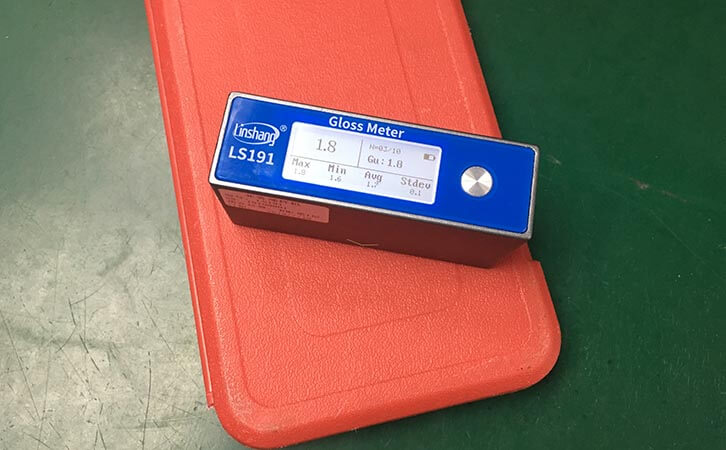Gloss Meaning and Measurement of Plastics
1. The bigger the measurement data, the brighter the gloss?
If you use the same gloss meter for plastic and the same measurement angle, the larger the measurement value, the brighter the plastic surface. If different gloss meters for plastic and different measurement angles are used, the gloss data here cannot be compared. Because the standard board may be different for different gloss meters for plastic. The gloss measurement values are very different under different geometric angles.
2. What does plastic gloss have to do with it?
From the meaning of the plastic gloss value above, we can know that measuring the plastic gloss value is related to the specular reflectance of the surface. In the process of plastic production, the raw materials and lubricant additives will affect the smoothness and reflectivity of the plastic surface. It will cause the plastic gloss to be higher or lower. Therefore, in the production of plastics, special attention needs to be paid to the selection of raw materials and lubricating additives, so as to avoid large deviations in the gloss of the produced plastic.
3. The meaning of measuring the gloss value of plastics
Gloss is a characteristic of plastic surfaces and it exists objectively. Gloss is a physical quantity that evaluates the ability of plastic surfaces to reflect light at a set of specified geometric angles. It is a relative measurement of specular gloss. Its value is to evaluate the specular reflection ability (luminous flux) of plastic surfaces under this measurement angle. The ratio of the specular reflection capacity (luminous flux) with the standard plate, which has a great relationship with the measurement angle and the standard plate.
In general, the reference standard of glossmeter for plastic is black glass with refractive index np = 1.567. Assuming that the plane is ideally polished, the plane will reflect the natural beam specularly and define the gloss at this time. The degree value is 100.0 gloss units. Gloss board is divided into high, medium and low according to the gloss value. The high gloss board is made of black optical glass or other materials. Medium and low gloss boards are made of glazed ceramic or black optical matte glass. Gloss is a ratio, which is the reflection ability of the object surface when it is illuminated by light. It is usually expressed by the reflectance of the sample in the specular (orthogonal) direction relative to the standard surface multiplied by 100, that is, G = 100R / R . R in the formula——the reflectivity of the plastic sample surface, / R. ——reflectivity of standard board.
4. Plastic gloss measurement
Some products need to show the surface metal texture realistically, so the polymer morphology on the metal surface needs to be changed in advance to make plastic products with various gloss characteristics on the surface. Some plastics tend to be directional due to their different forming methods and their gloss is also different. Such as the ceiling lampshade and embossed lampshade used for lighting, the material's transparency and opalescent properties will affect the gloss of the material.
The purpose of testing the gloss of plastic is to evaluate the quality of the product based on data inspection and to indicate whether the production conditions are related to the surface gloss of the material. The refractive index range of plastic is approximately 1.4 ~ 1.6GU and the gloss is generally within the range of 70 ~ 110 GU. However, the reflective conditions of transparent plastics and translucent plastics are different and cannot be generalized. A 60 ° gloss meter for plastic LS191 can be used to measure and evaluate the gloss of plastics.
